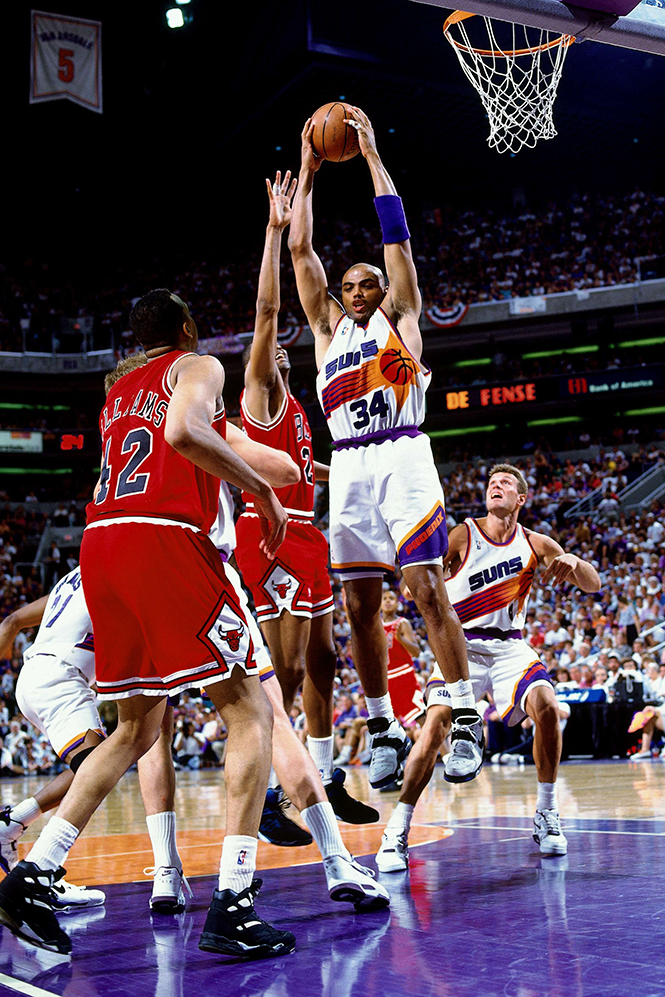Home »
Misc »
How to get more rebounds in basketball
How to get more rebounds in basketball
Improve Basketball Rebounding: Drills, Tips, & Fundamentals
Few
statistics influence the outcome of the game as do rebounding stats. Few
statistics are indicators of as many things as are rebounding stats. Few
actions affect more parts of the game as rebounding.
Rebounding
can be an indicator of how hard you are playing, team focus, how well you are
shooting, etc. The other benefits are rewards for playing good defense by
getting the ball off the defensive glass and lay-ups for grabbing offensive
rebounds. Both situation feed your confidence and allow you to play better.
Just
how important is rebounding to your team's success? It's critical and here's
why:
For
starters, very few teams make 50% of their first shot attempts. If you were to
actually study that, you will see that, at the very highest level (NBA) teams
are in the 43% range. As you move down, through college and then to high school
you will notice that the percentages go down to the mid 30's.![]() Keep in mind that
we are talking about 1st shots. Teams that consistently shoot near the 50%
range are usually good in 2 areas, making lay-ups and getting offensive
rebounds that turn into made lay-ups.
Keep in mind that
we are talking about 1st shots. Teams that consistently shoot near the 50%
range are usually good in 2 areas, making lay-ups and getting offensive
rebounds that turn into made lay-ups.
Another
thing to consider is that every rebound is a possession. If you get a defensive
rebound, that gives you a possession and a chance to score on the other end. If
you shoot, miss and get the offensive rebound, you have is an additional
possession in which you have a chance to score. Most importantly, it is an
additional possession that you have gained without the other team having a
chance to score.
Number
of possessions is a very important reference point. The more possessions you
have the less efficient you have to be on offense, the lower shooting
percentage you have to have to attain the same number of points. It is more
probable you will get 40 points by
shooting 20 for 50 (40%) than the same number of points by shooting 20 for 40
(50%). If you shoot 20 for 60 (33%) you will still have 40 points. Shooting 20
for 30 (66%) still gives you 40 points but doesn't happen very often.
If you shoot 20 for 60 (33%) you will still have 40 points. Shooting 20
for 30 (66%) still gives you 40 points but doesn't happen very often.
Am
I saying that it is better to shoot lower percentages? Certainly not. I am
saying that it happens more often and it is more practical to practice and plan
for missed shots because they usually happen more often than made shots. It is
what happens to those missed shots that give you additional possessions,
possessions that give you an opportunity to score while robbing your opponent
of the same opportunity.
That
is what decides games.
How Do We Become Good Rebounders?
I
think there are 3 things that lead to good rebounding:
- Knowledge
- Skill
- Determination
Notice that nowhere in those 3 aspects is the size or strength.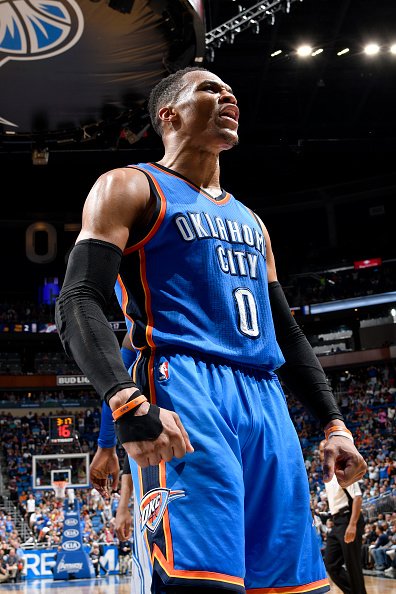 I am not saying that
doesn't help but think about this, Paul Silas, at 6'6' didn't become one of the
greatest offensive rebounders of all time because of his size. There were
plenty of 6'6' players around but they could not do what Silas did. Bill Russell
didn't become one of the greatest rebounders of all time because he was 6'9".
There were plenty of bigger and stronger players around but they couldn't do
what Russell could. Another, more current example would be Udonis Haslem of the
Miami Heat. At 6'8", Haslem is drastically undersized to play power forward in
the NBA. Yet, for the past 3 years he has been a leader in rebounds per minutes
played.
I am not saying that
doesn't help but think about this, Paul Silas, at 6'6' didn't become one of the
greatest offensive rebounders of all time because of his size. There were
plenty of 6'6' players around but they could not do what Silas did. Bill Russell
didn't become one of the greatest rebounders of all time because he was 6'9".
There were plenty of bigger and stronger players around but they couldn't do
what Russell could. Another, more current example would be Udonis Haslem of the
Miami Heat. At 6'8", Haslem is drastically undersized to play power forward in
the NBA. Yet, for the past 3 years he has been a leader in rebounds per minutes
played.
How
do they accomplish what they do?
KnowledgeGood rebounders understand the game and personnel. They study who shoots, when and
from where. I know that that might be difficult when playing an opponent you
have not seen before, but tendencies become apparent as the game unfolds. Be
that as it may, there is no reason you can't study your own teammates. If you
know Joey likes to shoot the ball from the right corner, instead of working on
something that is going to be non-productive, get yourself in a position to
rebound when Joey gets the ball in the right corner. That is preparation that
will allow you to overcome most players you have to rebound against.
Be
that as it may, there is no reason you can't study your own teammates. If you
know Joey likes to shoot the ball from the right corner, instead of working on
something that is going to be non-productive, get yourself in a position to
rebound when Joey gets the ball in the right corner. That is preparation that
will allow you to overcome most players you have to rebound against.
The next thing good rebounders understand is where the
ball will go. Shots taken from the wing down to the baseline rebound back at
the same angle or over at an opposite angle 80% of the time. Only 20% of
shots rebound to the front of the rim. |
|
|
Shots taken above the foul line extended to the top of the
key rebound 60% to the sides and 40% to the front of the rim.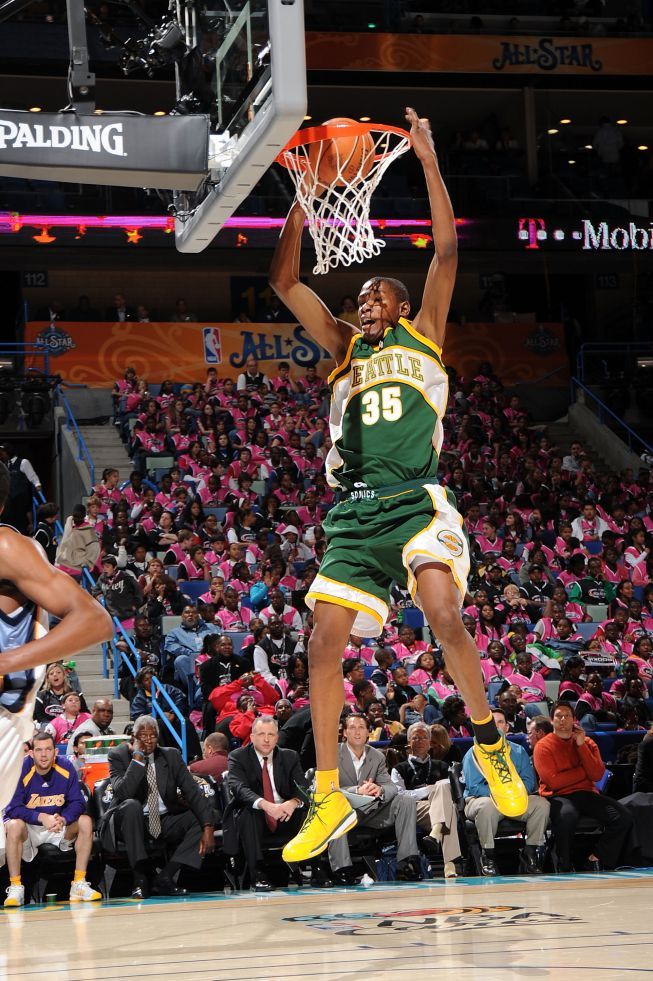 Good rebounders
are proactive. Study where the shots come from and react accordingly before
the ball misses. You might miss a few but you will get a lot. Good rebounders
are proactive. Study where the shots come from and react accordingly before
the ball misses. You might miss a few but you will get a lot. |
|
|
Good rebounders also understand that a long shot often produces a long rebound. Not always, but you have to play percentages.
How long will the rebound be? Well that would be purely a guess. However, while
we understand that being close to the rim is good for rebounding, you can be
too close. Assume that EVERY shot will be a long rebound and position yourself
as such. A good guide for position is the NBA charge/block arc in the lane.
That is about the area you want to get to on a missed shot.
Skill
The
skills of rebounding are simple: prepare your hands, block out, catch the ball.
As simple as it sounds, these are skills that have to be practiced.
Drill To Get Your Hands Up
McHale Taps
On the right side of the backboard, jump and
dribble the ball off the backboard with your right hand. Time your jump so you
dribble the ball while you are in the air. Pick a spot on the backboard to
dribble at so you are not just batting the ball up. Do not bounce between
dribbles, each jump is a dribble. With each dribble with your right hand, touch
the rim with your left hand. If you can't get the rim, try to get the net.
Switch sides and hands
Work up to 50 taps or 2 minutes.
Drill to Get Your Hands Ready
Bangs
Start on the right side. Grab the ball with 2
hands, jump and bang the ball on the backboard, as hard as you can, 3 times.
On the 4th jump, put the ball in the basket. If you can't get the backboard,
use the wall.
Change sides.
Work up to 20 bangs
Keep the ball over your head. No rest or winding
up between jumps.
No rest or winding
up between jumps.
Drill to Box Out
2 on 2 Box Drill
Determination
While the shortest distance between 2 points might be a straight line, the same
cannot be said of a rebound. While you can play the odds (see knowledge),
trying to predict where a rebound will carom is like predicting how a football
will roll after landing on its point. Balls hit hands, hits the rim multiple
times, players are pushed out of position -- there are 2nd and 3rd chances when
you did not think you had one chance. You have to condition yourself that you
can get every rebound and go after it again and again until you grab it.
Boxing Out
Boxing on a rebound is very important. However, it is not as important as getting the
ball. Boxing is a momentary action intended to impede the path of an opponent
and delay his ability to go after the ball. I have seen many games lost due to
a great box out but nobody went after the ball.
In addition, boxing out is a confusing term. Previously we discussed rebounding
position (around the NBA block/charge line). What would you do if your opponent
is inside of you in that rebounding position? You can't box him out because he
is inside of you. I would box him in, turn and push him toward the basket. What
if you are under the basket with your defender on your back? Would you box him
out into good rebounding position? I would turn and box him in, under the basket.
When boxing out, find your man as soon as a shot goes up. Pivot in the most
comfortable and efficient way you can, into an athletic position that looks
like you are sitting on a chair. Immediately your arms go up, your elbows go
out and your hands get ready to grab the ball. We discussed above the reasons
for getting your arms up and hands ready (see skills). The purpose for getting
your elbows out is NOT to hit anyone, but it does make you wider and more
difficult to go around.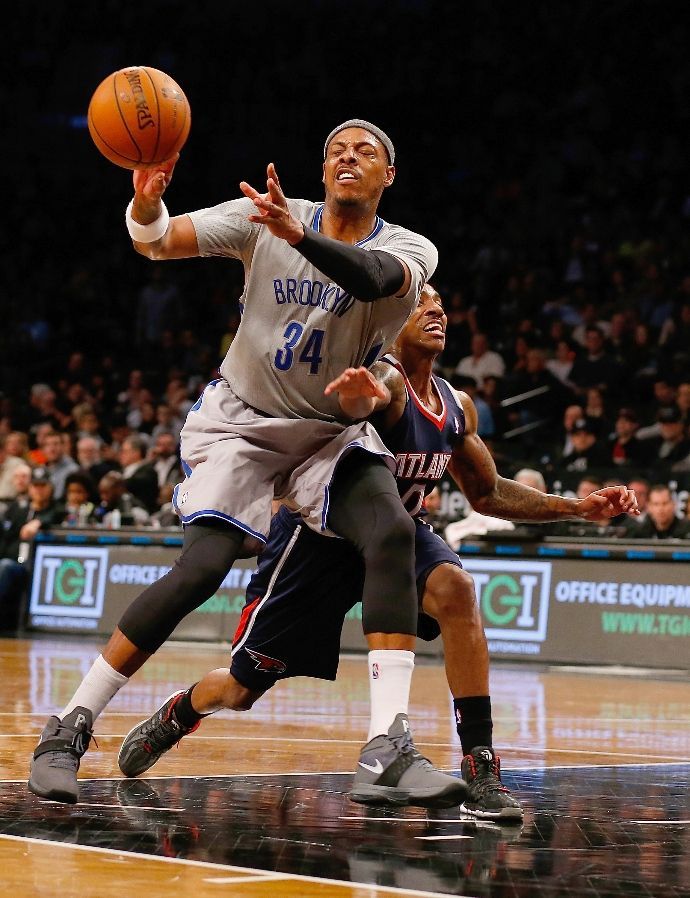 In this position, bump your man with your butt and then
go after the ball.
In this position, bump your man with your butt and then
go after the ball.
Boxing out (or in) is not only a defensive maneuver but can be an offensive maneuver
as well. Use it any time you are in position to do so. Be aggressive and take
control of the situation. Don't wait for your man to make a move, go and get
him before he has a chance to move.
Remember, to be a good rebounder or a good rebounding team doesn't necessarily mean you
get every rebound, just be sure your opponent doesn't get it.
The Truth About
Rebounding
Technique will certainly help any rebounder, however rebounding is one area in basketball
where you can excel with out technique. True greatness in rebounding, either as
an individual or as a team lies in the emphasis and the value you place on it.
Jim Calhoun, the great coach at the University of Connecticut, says you should be
able to walk into a practice and within 15 minutes you should be able to figure
out what is important to the coach and the team.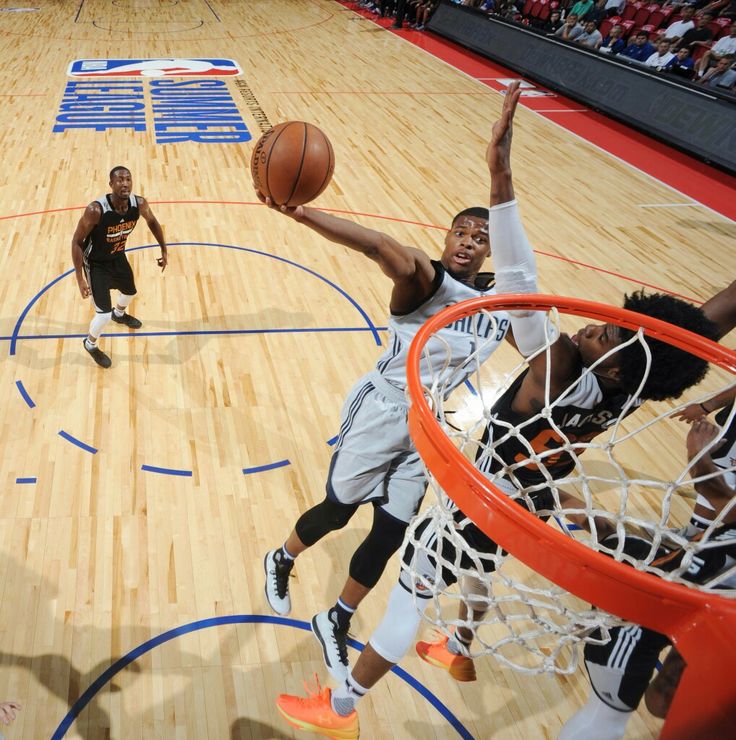 If you look at his teams,
going all the way back to his days at Boston State and Northeastern, you will
see that his teams are always one of the leaders in the nation in rebounding.
Rebounding is a prominent feature in his offensive and defensive schemes. When
you walk into his practice, it is evident immediately how important rebounding
is to him and his team. In addition, one of the "Laws of Learning" is "primacy"
(what is learned first is learned best). In Coach Calhoun's practices, the
first drills they do every day are rebounding drills.
If you look at his teams,
going all the way back to his days at Boston State and Northeastern, you will
see that his teams are always one of the leaders in the nation in rebounding.
Rebounding is a prominent feature in his offensive and defensive schemes. When
you walk into his practice, it is evident immediately how important rebounding
is to him and his team. In addition, one of the "Laws of Learning" is "primacy"
(what is learned first is learned best). In Coach Calhoun's practices, the
first drills they do every day are rebounding drills.
If
you want to be great rebounders, learn from that.
Related Articles and Products
Basketball Rebounding Tips & Drills eBook
More Rebounding Drills (for coaches)
More Rebounding Drills (for players)
3 Simple Steps to Improve Rebounding
How to Box Out and Chin the Ball
Post Play Workouts With The Attack And Counter Workout App - Workouts For All Positions
What do you think? Let us know by leaving your comments, suggestions, and questions.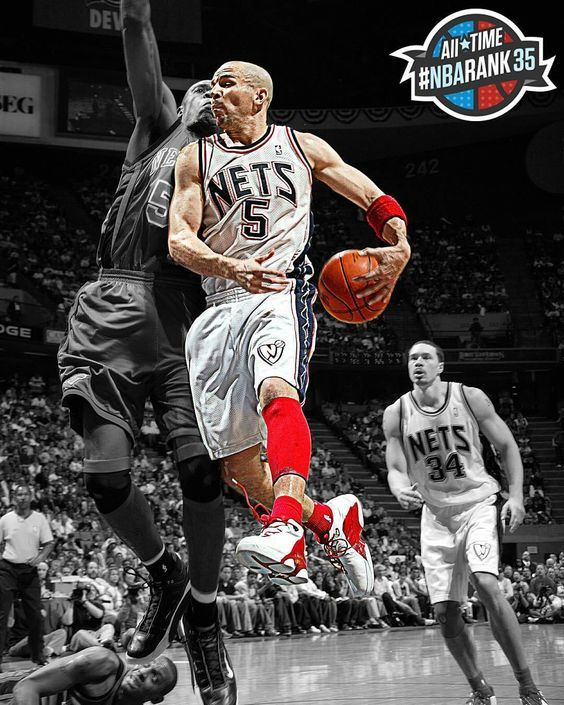 ..
..
Get More Rebounds and Win More Games
By Jeff Haefner
To win basketball games consistently, it's a fact that you must find a way to consistently take more shots than your opponents.
Basketball is simple and to win you must either shoot a higher percentage than your opponent and/or you need to TAKE MORE SHOTS than them.
So how do you get more shots than your opponent?
Well, one blatantly obvious way is to get more rebounds in every game that you play.
I personally believe (and so do many other coaches) that rebounding is an incredibly important aspect to basketball and not enough coaches devote
enough time to rebounding.
To prove the point, here are 5 reasons that rebounding has a more profound impact on winning than you think
| |
Reason #1 - Excellent rebounding will give your team more chances to score and give your opponent fewer chances to score.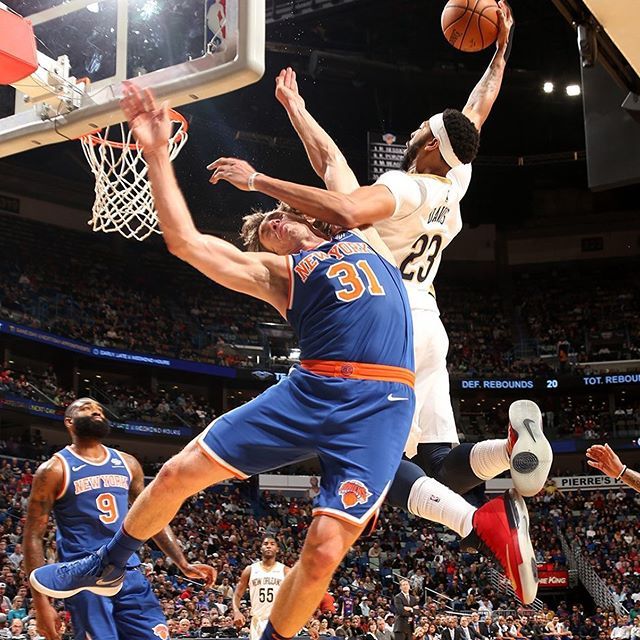
Just one offensive rebound could literally give your team as much as a 6 point swing! This is because you get an extra shot (could be up to 3 points)
and you take one opportunity away from your opponent (could be up to 3 points). That's a 6 point swing in your favor.
FACT #2 - Excellent rebounding will actually improve your team's shooting percentage.
Many times, offensive rebounds are put-backs from close in. These are high percentage shots that usually go in. Plus, a defensive rebound ending in a
good outlet pass can allow for a fast break score before the opposing team can even set up their defense. Many times, these are easy high percentage
shots.
Every great play often starts with a REBOUND. If you're good at rebounding, your team's shooting percentage will go up. If you're good at rebounding, your team's shooting percentage will go up.
FACT #3 - Excellent rebounding will lower your opponent's shooting percentage.
By cleaning up the boards, you stop the other team from getting out and running consistently. You also take away THEIR easy put backs on the offensive
end.
FACT #4 - Excellent rebounding will get you to the free throw line more often.
Not to mention, rebounding can get your opponent in foul trouble. How many times do you see a fouling situation occur on an offensive rebound put back?
FACT #5 - Excellent rebounding usually means your team has more heart -- and better defense.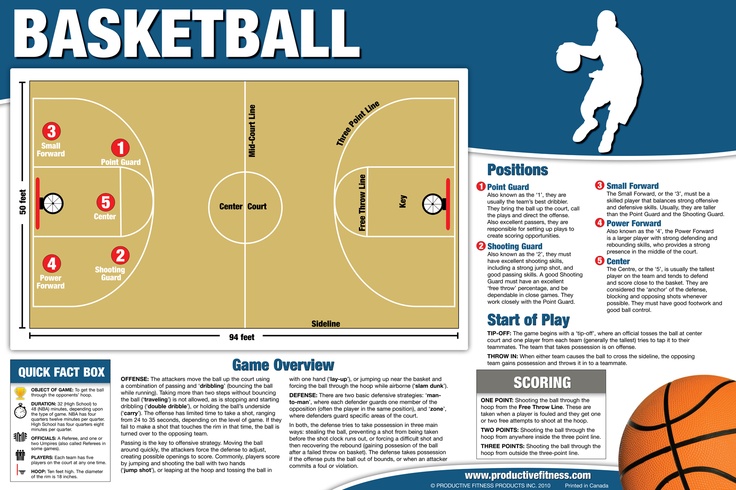
If your team has more heart (which is what rebounding requires), then it is probably going to spill over to the defensive end of the court.
|
With all these benefits, how much practice time do you actually devote to rebounding?
If you want to be good at it, I promise that you must do MORE than talk about it. That's only a very small piece of the puzzle.
Almost every coach talks about rebounding, but very few do what it takes to excel.
If you would like a proven method to consistently out rebound your opponent and become a powerhouse on the boards, check out our step by step rebounding guide and drills.
I highly recommend considering the rebounding strategies that we present in these eBooks. They will help you win more games, guaranteed!
Do you have any questions or comments about this article? Let us know by leaving your comments. ..
..
A. Ya. Gomelsky about strategy and tactics in basketball
copies of swiss watches
Strategy is the main theoretical direction of the entire work of the team, which determines the means and methods of preparation for the main competitions. Four-year plan for the preparation of the USSR national team for the Olympics in Seoul - the strategy of the team in 1985-1988. The strategy also provides for the management of the team during the competition.
Tactics is a part of the strategy that solves the main tasks of training, taking into account specific capabilities - team resources, characteristics of opponents, competition conditions. All this determines the tactical and combination baggage of the team.
When choosing tactics of the game (attack), one should proceed, firstly, from the real capabilities of the players, taking into account, first of all, their strengths, for the disclosure of which combinations are built and learned. Secondly, attack tactics are determined by the strength and weakness of a real opponent in a tournament, match.
Secondly, attack tactics are determined by the strength and weakness of a real opponent in a tournament, match.
I usually discuss playing combinations with the players for whom this combination is designed. I know the strengths of my players, but the players themselves know them even better and can make significant adjustments to the combinations I have proposed.
A.Ya. Gomelsky about playing defense
I believe that defense is the main concern of the coach: firstly, because the victory of the team largely depends on its strength, secondly, because the attack starts from the defense, like from the stove, in- thirdly, because the players themselves never work on the elements of protection, and finally, because the audience, as a rule, does not see it, even journalists often underestimate it.
The best team cannot win without a solid defense. Team defense is built on the individual characteristics, capabilities and mood of all players. Often in training, and even in competitions, individual players show indifference to defensive actions. It always bothered me and even angered me. Yes, the menial work on defense isn't that spectacular - except for things like block shots, rebounds, interceptions.' And many players are not aggressive on defense, they are resting on defense, trying to prove themselves in attack.
Often in training, and even in competitions, individual players show indifference to defensive actions. It always bothered me and even angered me. Yes, the menial work on defense isn't that spectacular - except for things like block shots, rebounds, interceptions.' And many players are not aggressive on defense, they are resting on defense, trying to prove themselves in attack.
I am sure that without great desire, responsibility, initiative, passion, it is simply impossible to defend today.
If the defender allowed the attacker to receive the ball in the danger zone, he has already lost. And how many cases when the center is allowed to receive the ball in the three-second zone under the shield, without striving to actively fight for an advantageous position.
Often defensive players are in no hurry, they do not concentrate their attention and efforts enough on this part of the game.
I want to emphasize that the psychology of defense is one of the most important concerns of a coach, and often more depends on the focus on defense than on technique and physical condition. Doesn't the ability to intercept the ball and win the rebound depend on the mind and the ability to calculate one's strength? If a player goes to intercept the ball, exposing his rear, and slips past the ball, is this not the result of poor calculation, inability to predict, anticipate the situation, think and act responsibly? All this is the psychology of protection.
Doesn't the ability to intercept the ball and win the rebound depend on the mind and the ability to calculate one's strength? If a player goes to intercept the ball, exposing his rear, and slips past the ball, is this not the result of poor calculation, inability to predict, anticipate the situation, think and act responsibly? All this is the psychology of protection.
I believe that a player who is weak and inept in defense causes more damage to the team than a player who is weak in attack. The definition of "good defense is head and legs", while still valid, is incomplete. Fast, tenacious, active hands that can both hit and intercept the ball, and prevent a throw, pass, kick the ball while dribbling - are no less important for a defender
Counterattack
Counterattack is the most spectacular and quick use of all opportunities to achieve result.
Fast play requires high technique. The desire to play at high speeds is commendable and acceptable only if the speed does not exceed the state of the art. Otherwise, there will be more mistakes, losses of the ball than achievements. Therefore, in an effort to prepare a fast break, it is necessary to train the execution of all technical elements at high speeds, using both active and passive resistance of defenders in situations 1-1, 2-1, 3-2, 4-3, 5--4 and with numerical equality.
Otherwise, there will be more mistakes, losses of the ball than achievements. Therefore, in an effort to prepare a fast break, it is necessary to train the execution of all technical elements at high speeds, using both active and passive resistance of defenders in situations 1-1, 2-1, 3-2, 4-3, 5--4 and with numerical equality.
My idea of a counter-attack is not only to move quickly towards the opponent's backboard, but also to quickly transfer the ball to the opponent's backboard with sharp passes, or, if there is no free recipient to receive the ball, by dribbling the ball, actively moving forward. In the final stage of the fast break, players strive to create a triangle in the front line of attack with the apex on the free throw line. There should be a player with the ball, and two other players - to the left and right of him, 4-5 m ahead.
A counterattack is possible in the following situations:
1) when intercepting the ball;
2) when taking a rebound on his shield;
3) after the opponent has made free throws;
4) after winning a dropped ball;
5) after the opponent manages to score the ball.
The best outcome of a fast break is taking the opponent's ring with a numerical advantage, when implementing situations in numerical equality: 1-1, 2-2, 3-3, 4-4. This is easier than beating a 5-5 defense that has already built up its defensive formations.
There are three phases in a counterattack that are equally important for success:
1) the beginning of a fast break - picking up the ball, first pass, movement of the players, their start;
2) the middle stage of the development of the attack - the transition by the players of the middle line of the field, their advancement;
3) completion of the attack - passing the ball at speed and throwing in close proximity to the backboard.
The timing of the "rehearsed fast break" depends on the speed of the players, the ball passes and the finishing shot. The USSR national team spent 5-7 s on a layered fast break. I think that the schemes of her tactical formations will provide great opportunities for the creativity of coaches working with any teams.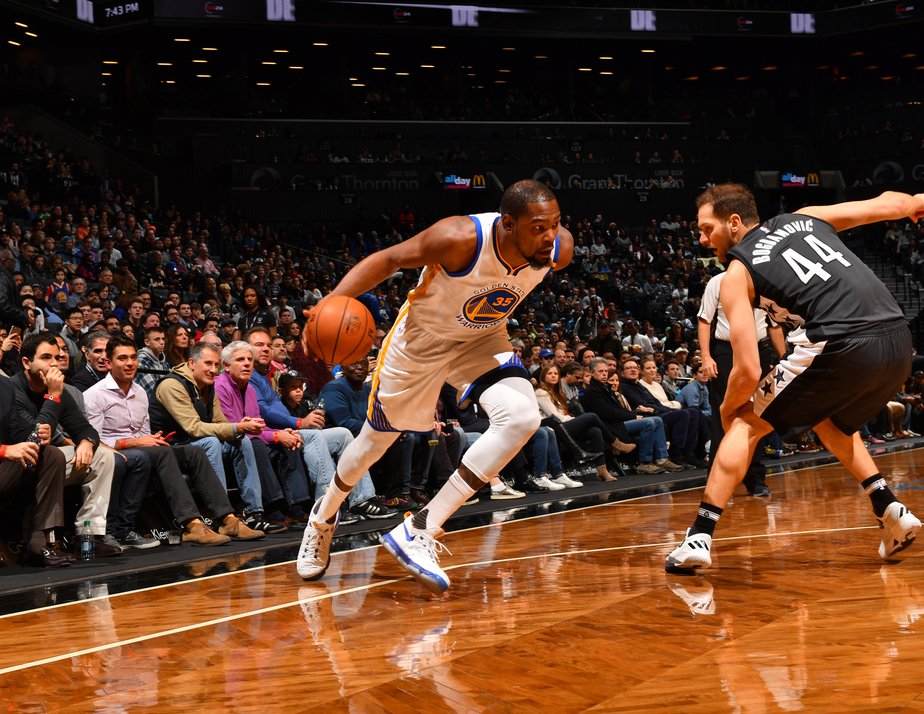
Playing in the USSR national team such powerful and tall centers as A. Sabonis and V. Tkachenko made it possible to carry out a counterattack through one long pass across the entire court.
Center #5, after recovering the ball from the backboard, passes it to runaway #2.
Such an attack was especially successful when building a zone or mixed defense, when one of the defenders or wingers playing in the front line of defense was given the task of running away at the moment of throwing at our ring, in the expectation that the giants would be able to take possession of the ball , bouncing off the shield, and make a long pass across the entire field. Naturally, such a system of counterattack requires special coordination of actions, and its development takes considerable time in the training process.
Development of a quick counter-attack through the middle of the field.
Players #5, #4, #3 are fighting for the ball and, having mastered it, they try to make the first pass to player #2, who passes the ball to player #1. Player #1 rushes forward dribbling through the middle of the court. Players #2 and #3 overtake the dribbler at high speed, form a triangle with #1, and finish the attack with a close range throw if they manage to create a numerical advantage under the opponent's shield.
Player #1 rushes forward dribbling through the middle of the court. Players #2 and #3 overtake the dribbler at high speed, form a triangle with #1, and finish the attack with a close range throw if they manage to create a numerical advantage under the opponent's shield.
If it was not possible to complete the attack in the first echelon, then the second echelon comes into action - center players #4 and #5. They, each on their own side of the court, rush to the opponent's shield. The one on whose side the ball is on ends the attack.
Development of a fast sideline break.
On a rebound from the left side of the backboard, the post makes a quick pass to player #2, who opens to receive the pass to the sideline, just above the free throw line. At the intersection of the sideline with the center, player #1 receives a pass from player #2, then passes it to player #4, who rushes forward on the left side. Player #4 has three possible continuations of the attack: give the ball to player #5 or #3, who is running towards the opponent's backboard in a straight line, or pass to player #2 in the area of the arc.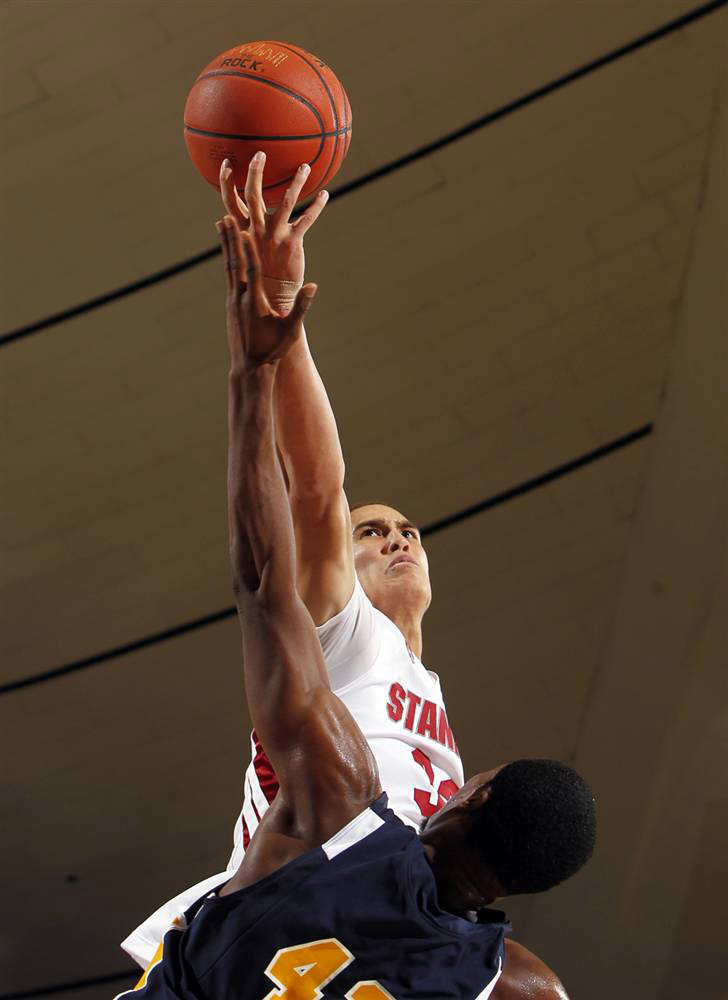 It is clear that the transfer should be made to the most open player, who is in the most advantageous situation.
It is clear that the transfer should be made to the most open player, who is in the most advantageous situation.
A similar situation occurs when attacking on the opposite side.
Development of a fast break after a free throw into our ring.
If player #4 catches a bounce or quickly clears a potted ball from behind the endline, the first pass is to the left sideline to player #1 opening at or slightly above the free throw line. Player #2 opens near the center circle, receives the ball and dribbles forward. Players #5 and #3 pass the dribbler along the touchlines, player #4 overtakes him from the right, and player #2 stays slightly back in the backing position. Thus, player #2 has four options to choose the direction of the attack.
Same procedure as above, but after rebounding a field goal or after the ball is thrown in from behind the end line.
Developing a fast break after a dropped ball in the center circle or on the free throw line in our half of the field.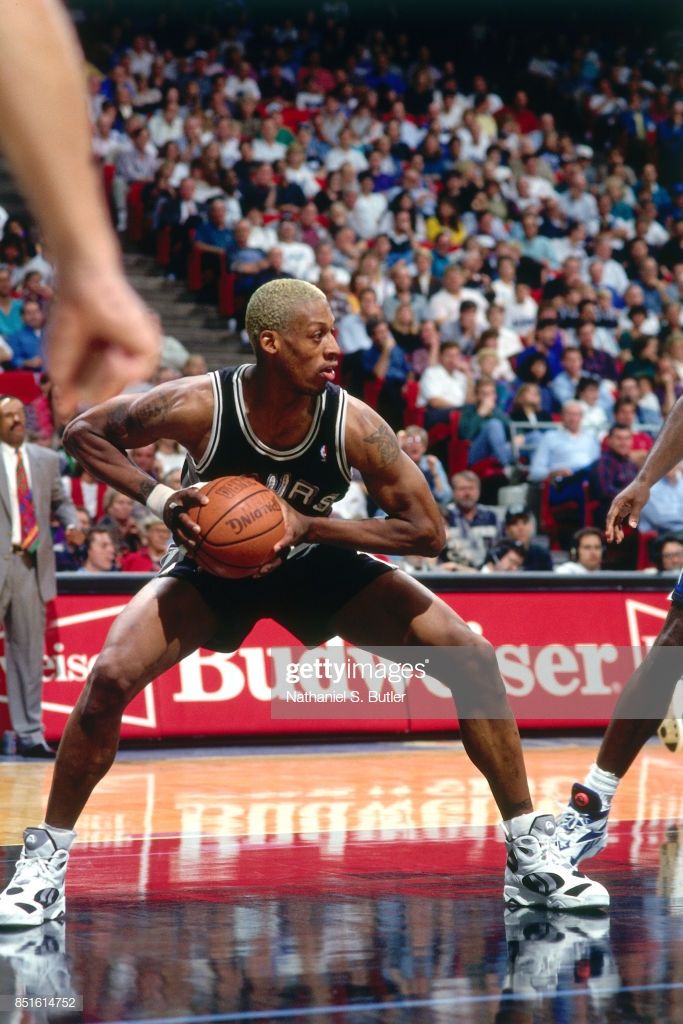
Player #5 discounts player #4 who is ready to receive the ball with his hands up. After catching the ball, #4 passes forward to player #1, who opens up to receive that pass after being screened by player #3. Players #2 and #4 support the attack. Such a combination can be played in both directions. At the heart of her success is high growth, good jumping ability and the ability to accurately throw the ball to the partner of the center player.
Same scheme, but now player #4 screens player #2 who, having received the ball from player #3, rushes forward.
The easiest way to complete a counterattack is for the players to take the shortest path to the opponent's shield. However, with the development of a counterattack, options are possible with cross screens
interaction like a trio
setting up screens for the players of the second echelon in the center of the field.
Many teams in the world, including the USSR national team, after they failed to complete the counterattack with a scoring throw, in the transition to a positional attack, spent precious time placing players, thus allowing the enemy to prepare for defensive actions and occupy all defenders advantageous positions.![]() This is why a quick or non-stop attack after a counterattack ("transition game") is increasingly used in the tactics of the best teams in the world. I will give an example of such an attack in the USSR national team.
This is why a quick or non-stop attack after a counterattack ("transition game") is increasingly used in the tactics of the best teams in the world. I will give an example of such an attack in the USSR national team.
The fast break was not completed by the players of the first attack tier #2 and #3, nor the second tier #4 and #5. They, each on their own side, set up screens for fielders #3 and #2 for a shot from medium or long distance, and then go to the backboard to receive the ball in the three-second zone on the spot or to fight on the backboard, after a throw from one of the players # 2 or #3. Options for a non-stop attack can be very different. This could be a double or triple screen for the team's sniper, or a winger or post entering the 3-second zone after receiving the screen. It all depends on the characteristics and capabilities of the player for whom the combination is being made.
Double screen to Marciulionis (#2) to attack with his left hand from the free throw area.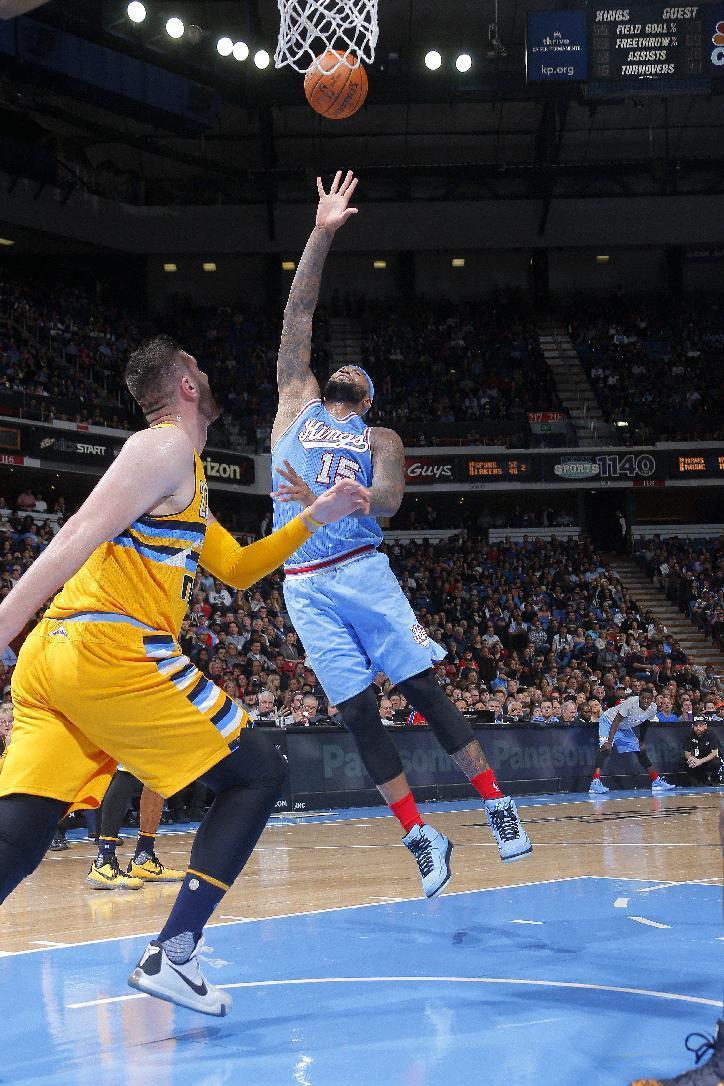
Players #4 (Volkov) and #3 (Tikhonenko) simultaneously put up two screens for player #2 (Marciulenis). #2 breaks into the free throw line, where he receives the ball from player #1 (Sokka). "Marciulionis has opportunities to continue the attack:
a) receiving the ball in motion and passing under the backboard;
b) receiving the ball with a stop and shooting at ring;
c) passing the ball to player #5 (Sabonis) in case there is a switch of defenders.
Players #4 and #2 after screening go under the backboard to fight for the rebound.
Mixed defense
There are several systems of mixed defense:
1. Four players build a zone defense 2-2
or 1-2-1
capabilities and tactics of the opponent.
2. Three players build a 2-1 zone defense and two guard the enemy's strongest snipers.
3. One player completes the zone formation while four players cover the opponents personally.
4. Two players form a zone defense and three players act as an individual defense.
Two players form a zone defense and three players act as an individual defense.
Mixed defense brought good luck to the USSR national team and the CSKA team more than once. The choice of defense has always been determined by the characteristics of the opponent and our capabilities.
In the final of the Olympic tournament in Seoul against the team of Yugoslavia, we used a mixed defense 1-4.
Sabonis played a zone defense, the rest of the players closely guarded their opponents. This was due to the presence of Vrankovic or Raja in the Yugoslav team, who are not very dangerous away from the shield, and the fact that Petrovich, Paspal, Kukoch posed a big threat. The players who guarded the leaders of the Yugoslav team could, with a greater degree of risk, fight with their opponents to get the ball. They knew that Sabonis would help them if they were beaten.
A similar defense was chosen in the semi-final tournament in Seoul against the US team. Sabonis did a zone defense and let Robinson or Reed or Maning shoot from wide. But the rest of the US players were completely covered, and a player like Maning did not bring a single point to the team. As a result, the USSR national team won 82:76. And Sabonis, who participated in the Olympics after a serious injury, two operations, took first place in the selection of balls from shields and made a great contribution to the victory of the USSR team.
Sabonis did a zone defense and let Robinson or Reed or Maning shoot from wide. But the rest of the US players were completely covered, and a player like Maning did not bring a single point to the team. As a result, the USSR national team won 82:76. And Sabonis, who participated in the Olympics after a serious injury, two operations, took first place in the selection of balls from shields and made a great contribution to the victory of the USSR team.
Sometimes, with two centers Sabonis - Tkachenko, we built a mixed, personally set defense 3-2. Two giants and one mobile defender played well in the zone. In the early 70s, it was Eremin, then Valters, and at the Olympics and the pre-Olympic tournament Sokk performed this function, and Belostenny and Volkov played instead of Sabonis and Tkachenko in Holland.
At the Seoul Olympics, we used such a defense (3 in the zone, 2 in person) against the Brazilian team.
Sabonis, Volkov and Sokk built a triangle on top of which Sabonis and Volkov played. Tikhonenko took care of So-uzu personally, and Marciulionis took care of Schmidt, and although these two players scored 65 points together, the match turned out to be very difficult for us, but we still won 110:105. The mistake in the choice of defense was that Schmidt outplayed the smaller Marciulionis in different positions, and Souza outplayed the slower Tikhonenko. In the last 10 minutes of the match, Volkov was attached to Schmidt, Marciulionis switched to Souza, and we changed Tikhonenko to Goborov in zone defense.
Tikhonenko took care of So-uzu personally, and Marciulionis took care of Schmidt, and although these two players scored 65 points together, the match turned out to be very difficult for us, but we still won 110:105. The mistake in the choice of defense was that Schmidt outplayed the smaller Marciulionis in different positions, and Souza outplayed the slower Tikhonenko. In the last 10 minutes of the match, Volkov was attached to Schmidt, Marciulionis switched to Souza, and we changed Tikhonenko to Goborov in zone defense.
Benefits of mixed defense
allows you to fight with him to get the ball, while expecting the active help of teammates, without fear of a throw.
2. Such a system, if the opponent is not prepared for it, tactically introduces confusion and makes it difficult to carry out combinations of screens.
3. Combines the best aspects of individual and zone protection systems.
4. Promotes a quick transition from defense to counterattack.
5.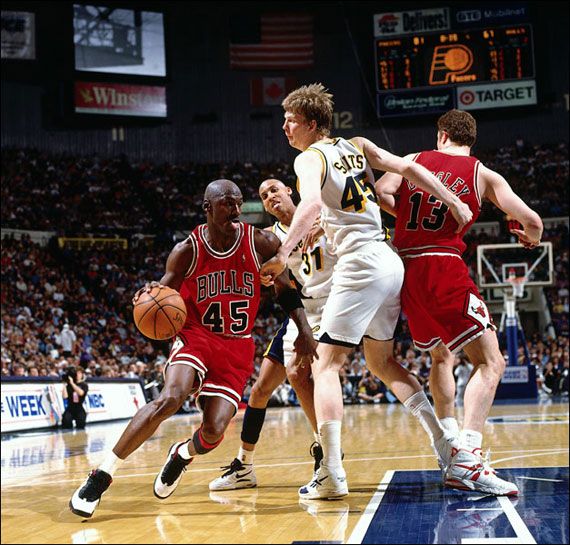 Allows players to use their strengths defensively and not show their weaknesses.
Allows players to use their strengths defensively and not show their weaknesses.
6. Can take the point guard out of the game and deprive the opponent of the usual formation and rhythm, destroy the counterattack if applied pressure throughout the field.
Weakness of the mixed defense
1. A technically competent team that has several leaders easily rebuilds the offense and breaks the mixed defense.
2. Simultaneous movements of two or three players diagonally can destroy a mixed defense if the opponent manages to create a numerical advantage on one of the sides of the field.
3. Often vulnerable to medium throws from 3-4 m.
4. Requires special long preparation, coordinated actions, high teamwork of the whole team for rebuilding and interchangeability in positions.
5. If one of the five players did not have time to reorganize or did not cope with his duties, then the whole idea of such a defense breaks down.
A.Ya.
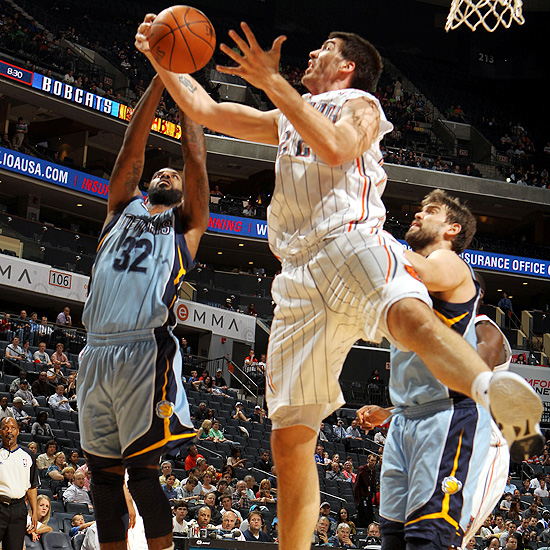
Gomel. Pressing defense
Pressing is the most active type of defense, constant pressure on the opponent. It can be personal or zone, it can start from the moment the opponent throws it: all over the court, on 3/4 of it, in their own half, i.e. on 1/2 site.
The goal of defense by pressing is not only psychological pressure on the opponent, but also the desire to break the opponent's established game, break his habitual connections between defense and attack, his combinations, make inaccurate passes of the ball, hasty - throws. It is impossible to apply pressure without mastering enough methods of individual protection. This form of defense requires high physical condition, good reserve and teamwork of all players and team units.
Pressing is used both as a system of play for long periods of time, and as a forced measure: when losing in a score to increase the pace or when waiting for pressure from an opponent.
By pressing, we try to take the ball away from the opponent - we force him to make false, inaccurate passes that are easily intercepted. Often, the opponents of the front line of pressing, having missed the opponents, do not pursue them, but watch the development of further events - this is a gross mistake. It is necessary to chase the player with the ball, trying to knock the ball from him from behind, stepping on his heels. Thus, you force the opponent to rush, worry, make mistakes.
Often, the opponents of the front line of pressing, having missed the opponents, do not pursue them, but watch the development of further events - this is a gross mistake. It is necessary to chase the player with the ball, trying to knock the ball from him from behind, stepping on his heels. Thus, you force the opponent to rush, worry, make mistakes.
If in zone or personal pressing you are left without a player and do not help a friend, you make a miscalculation. If one of the five pressers is not active, the work of the entire team goes down the drain. Pressing is primarily an active defense of the team.
In modern basketball, many coaches tend to believe that personal pressing is less effective, difficult, leads to a large number of personal violations and is inferior in usefulness to zone pressing systems. I also believe that a strong, technical player with good dribbling is able to cope with personal pressure.
In addition, with a stretched defense, it would be incredibly difficult to keep such players as Marciulionis, Volkov, Kurtinaitis, Petrovich, Schmidt, Kukach, Paspal, Rivier, Gallis one on one. I'm not talking about NBA players. But although zone pressing has become more popular, it is impossible to do without the ability to play personal pressing. Therefore, it is necessary to train defense daily 1-1, 2-2, 3-3, 4-4 all over the court, with and without the ball, with and without dribbling, with and without screens, first at a walk, then at high speed.
I'm not talking about NBA players. But although zone pressing has become more popular, it is impossible to do without the ability to play personal pressing. Therefore, it is necessary to train defense daily 1-1, 2-2, 3-3, 4-4 all over the court, with and without the ball, with and without dribbling, with and without screens, first at a walk, then at high speed.
Exercises are useful in which the number of defenders prevails over the number of attackers. These exercises promote the interaction of the defenders, instill the skills of tackling the ball. They are also good for attacking players. When training personal pressing, due attention should be paid to the rapid movements of players in an active stance, in different directions, with a skillful change in the positions of players. Defenders of the first line of defense seek to push their attackers to the sidelines and prevent the attacker from getting around him with the ball and without the ball.
If one of the defenders managed to stop the attacker with the ball at the touchline at the intersection with the penalty or center line, the defensive partner must come to the aid of a friend: together they force him to make a cross pass, which the other three players are ready to intercept.
The initial stage of personal pressing is carried out by two fundamentally different tactical formations:
1. The opponent who introduces the ball into the game holds a high moving edge and with an active movement of the hands prevents him from making an aimed pass.
2. No one guards the opponent who puts the ball into play, but two pressers prevent the most dangerous dribbler from getting the ball.
For example, Volkov secured Sokk and Marciulionis from behind when passing to player 5.
A few tips when defending with personal pressure: make him stop and do not let him make an accurate pass, interfering with his hand movements;
2) if the defending partner allowed himself to be bypassed, immediately come to his aid, of course, without leaving your ward in a safe position under the shield;
3) constantly watch not only your ward, watch the actions of partners, learn to see the whole field.
In the USSR national team and CSKA, zone pressing 1-2-1 - 1 brought us the most success.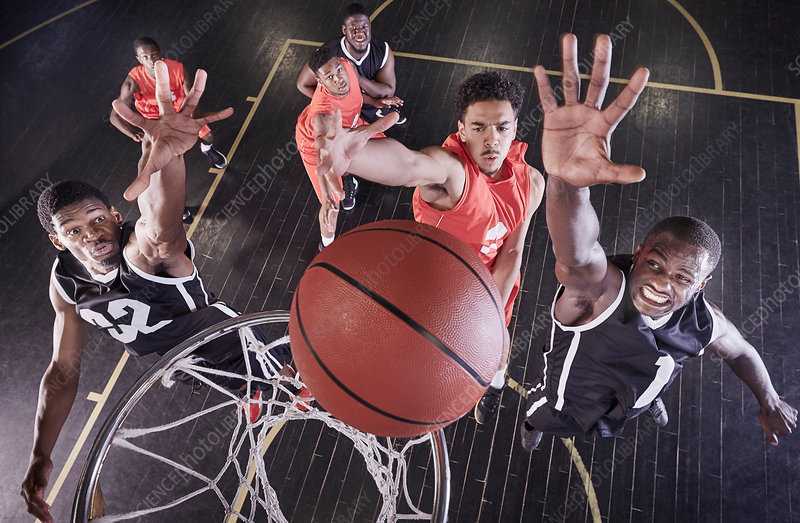 We started pressing from the opponent's front line after a goal and a free kick. High extreme Volkov interfered with the throw-in. If the ball was injected to the right, Marciulionis and Volkov attacked X2 defender together, trying to prevent him from going forward and make an aimed pass to XI defender, Sokk followed the movement of X3 and X4. Sabonis secured the rear, was responsible for long passes and for the X5 player. Tikhonenko in the center of the field followed X4's pass with a long pass and went to the ball passing side.
We started pressing from the opponent's front line after a goal and a free kick. High extreme Volkov interfered with the throw-in. If the ball was injected to the right, Marciulionis and Volkov attacked X2 defender together, trying to prevent him from going forward and make an aimed pass to XI defender, Sokk followed the movement of X3 and X4. Sabonis secured the rear, was responsible for long passes and for the X5 player. Tikhonenko in the center of the field followed X4's pass with a long pass and went to the ball passing side.
Returning with a weak attack, we built a defense 2-3
Zone defense in basketball
The meaning of this defense is that the players are in charge of a certain area of the field, in accordance with the position of the ball and the formation of the attacking team.
Benefits of zone defense:
1. Gives the opportunity to arrange players according to their physical, technical and mental characteristics.
Tall, jumpy players are located close to the shield, mobile, fast players - in positions higher from the shield.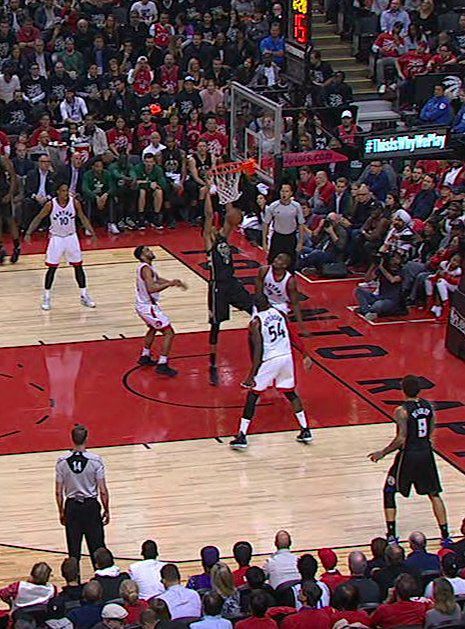
2. More commanding, easy to master, able to compensate for the individual gaps in the defense of the players.
3. Promotes counter-attacking and frequent interceptions of the ball with the greatest possible degree of risk, because. Partners are always ready to help.
4. The number of fouls in a zone defense is usually less than in a personal defense.
5. This defense is less vulnerable to screen combinations.
6. Can concentrate with strong opponent centers and stretch with snipers.
7. More than personal protection, it saves players' strength and protects leaders from fouls.
8. Most effective against opponents with strong centers.
9. A team that owns a zone defense can easily build mixed forms of defense: 3-2, 4-1, 2-3.
10. Convenient and suitable for small fields.
Disadvantages of zone defense:
1. Inferior to the personal psychological responsibility of the players, their charge for individual victory in defense.
2. Less useful against teams with strong snipers.
3. As a rule, the corners of the court are less protected in zone defense.
4. Zone defense can be used occasionally and should not be the main form of defense. It is not advisable to use zone defense at the beginning of the match, when the opponent's players are not yet tired, energetic enough - their throws are more accurate and productive than at the end of the game.
There are several formations of the zone defense, however, each of the zone defenses should easily transform depending on the attack - stretch when attacking from a distance and group around the ring.
Even type of zone defense formations includes systems: 2-2-1, 2-1-2, 2-3.
Odd formation: 1-2-2, 1-3-1, 3-2.
Each of these constructions has its advantages and disadvantages, which are useful to analyze.
The arrows indicate the direction of movement of the players. The shaded places on the court are the weak positions of the defense.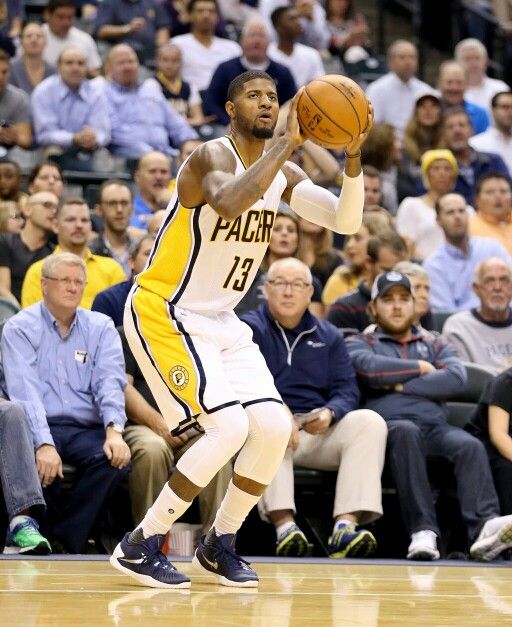
Zone defense 1-2-2
#1 - the lightest, fastest defender, #2 and #3 - quite mobile, jumpy, good if their height is at least 2 m. #4 and #5 - centers. Their task is to fight with the opponent's centers, picking up balls from the shield.
This system is most useful against teams trying to attack from under the shield through the post. Disadvantages - weak positions indicated in the figure.
Zone defense 2-1-2
It is used against strong opponent's centers who are dangerous on the "second floor" when rebounding the ball. Good for developing a counterattack with fast #1 and #2 players. Vulnerable in corners under 45, in the center for long and medium throws. The task of post #5 is to mark the opponents' post and, together with ?3 and ?4, create a rebounding triangle. #3 and #4 are mobile and high wingers, they can be swapped depending on the place of the sniper's attack.
Zone Defense 1-3-1
Helps to keep #3, #5, #2 between the ball and the basket at all times, used against opponent's strong centers and shots from middle and close positions.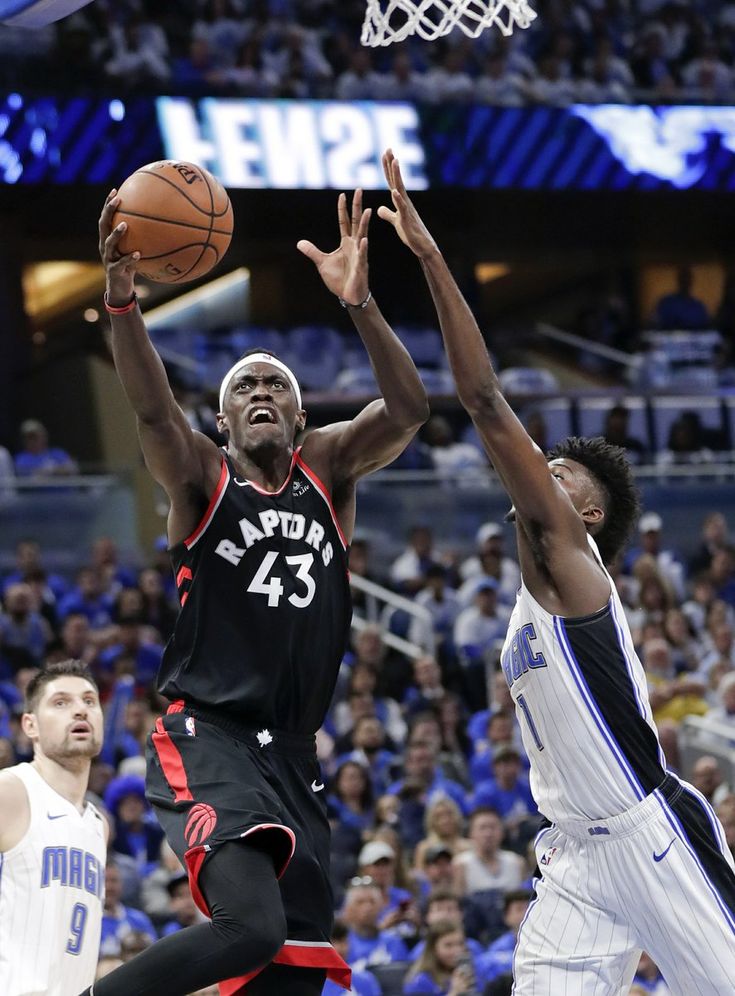 Her weakness is throws from the corners of the site and passes to the shield along the front line.
Her weakness is throws from the corners of the site and passes to the shield along the front line.
#1 - the fastest defender, running into the gap in every possible situation, #2 and #3 - mobile, jumping players, #5 - center, #4 - the fastest winger, able to move into the corners of the court.
Zone defense 3-2
#1, #2 and #3 are aggressive, mobile players, the success of the whole system largely depends on their activity. All three are focused on intercepting the ball and counterattacking. This system is most acceptable against teams seeking to attack from a distance, and less suitable against strong centers. The 3 second zone and 45 angle positions are the most vulnerable. #1 is in charge of the foul line. #2 and #3 are in a rebound fight. #5 and #4 are the first and second centers.
Zone protection 2-3
Strongest under the backboard, in the corners of the court along the front line. It is used against a tall, powerful team attacking from close positions and from under the shield.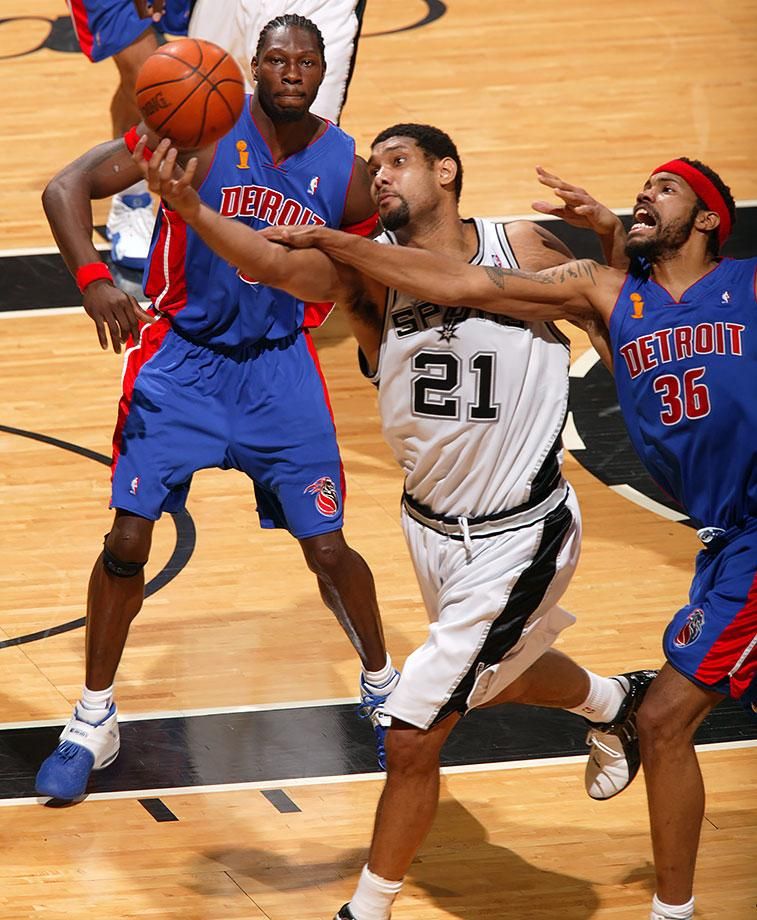 Often used for group selection of the ball in the corners of the court. When interacting #4 and #2 or #3 and #1, the defense is less effective on the foul line and at a 45 angle. #5 - center, #4 - second center, #3 - winger, #1 and #2 - defenders, constantly aimed at interception and counterattack.
Often used for group selection of the ball in the corners of the court. When interacting #4 and #2 or #3 and #1, the defense is less effective on the foul line and at a 45 angle. #5 - center, #4 - second center, #3 - winger, #1 and #2 - defenders, constantly aimed at interception and counterattack.
Zone protection 2-2-1
This defense is used by agile and short teams aiming to intercept the ball and constantly counterattack. This zone counterattack is used against teams seeking to attack from medium distances. Center #5 is responsible for rebounding, wingers #3 and #4 are responsible for positions in corners and under 45 , rebounding the ball and for the foul line.
Defenders #1 and #2 tend to close the passes to the shield and into the three-second zone, while they themselves are constantly aimed at counterattacking.
A.Ya. GomelskyDefense against ball carrier
It is necessary to work out the correct body position in a basketball stance: the center of gravity is evenly distributed on both legs, but not on a full foot, but on toes, with a "charged" (ready for any movement) foot, knees slightly bent, legs slightly wider than shoulders . Boxing stance - like the great Michael Jordan.
Boxing stance - like the great Michael Jordan.
If the opponent is in possession of the ball, one arm of the defender must be directed at the ball and constantly attack the opponent, preventing him from aiming or throwing (best if it touches the attacker), and the second arm slightly pulled back. Many defenders, being between the player with the ball and the basket, even in the correct stance, do not actively use their hands, do not make an offensive movement towards the attacker, which allows the opponent to calmly take further actions. At the same time, it must be remembered that you cannot cross your legs, that the distance between the defender and the opponent must be calculated so that the opponent can pass with a dribbling to the ring.
Contact defense against the ball carrier, although difficult and somewhat risky, is modern and has its advantages. If your arm extended to the opponent reaches his chest, then by doing so you prevent the attacker from lifting the ball up for a throw.
Defender's movements should be trained regularly:
a) in each training session - with and without resistance;
b) with one or two balls;
c) with side steps, making contact with the body closest to the attacker.
The defender's actions in different situations can be divided into 12 positions:
1. Defense against a dribbler driving the ball to your ring.
2. Defending against a player who has finished the dribble and is looking to either shoot or pass.
3. Defense against an attacker 5-6 m from the backboard, but not using the dribble.
4. Actions of defenders in numerical minority.
5. Actions of two defenders against three forwards.
6. Actions of three defenders against four forwards.
7. Actions of defenders during screenings.
8. Rear screen protection.
9. Slip protection.
10. Group ball tackle by two defenders.
11. Defense against the first pass to the counterattack.
12. Fighting the attacker in the corners of the court.
Let's try to analyze the defender's actions in each of these positions.
1. Defender's task - in a parallel low stance, without crossing the legs, move backwards, knees slightly bent, one hand all the time makes attacking movements towards the dribbler (feints with the body and head participate in this frightening dribbler movement), with the other hand he tries to stop the dribble (if possible, knock the ball out). The raised hand is ready to prevent the presenter from making the pass. Hands can be changed, they are always in motion.
As already mentioned, one should move on a "charged" foot, the heels do not touch the floor, the back is straight, slightly tilted forward, the head is raised up.
The leader should be pushed to the sideline, in the corner of the court, or his movement should be directed towards the defensive partner, remembering that the leader must not be allowed to go to the "strong" side (if left-handed - to the left, if right-handed - to the right).
The distance from the leader should be maintained depending on the speed of his rushing with the ball, his ability to attack or pass, as well as your ability, taking into account the position on the field of defensive partners. Do not rush to take the ball away from a good dribbler, wait for him to stop or make a mistake.
2. If the attacker has finished dribbling and has stopped to shoot or pass the ball, the defender must definitely get close to him, actively using his arms, preventing him from concentrating on the next action. The hand closest to the opponent must touch the fingers of his chest or stomach and not allow him to lift the ball up to attack the ring or pass. The defender seeks to force the opponent to turn his back to the shield and, without stopping attacking the attacker, prevents him from making an aimed pass. The defender must signal to his defensive partners to be ready to intercept the ball. These are already team actions.
3. If the opponent has received the ball 5-6 m from the backboard and he is in possession of the dribble, the defender must not stop actively attacking the attacker; make short lunges with your front foot, use your hands to prevent him from aiming. The attacker cannot be missed to the shield along the front line, if he moves slightly towards it, none of the partners will help the defender. The hand close to the end line insures the passage with the lead, the other one attacks the attacker.
The attacker cannot be missed to the shield along the front line, if he moves slightly towards it, none of the partners will help the defender. The hand close to the end line insures the passage with the lead, the other one attacks the attacker.
Do not give in to feints. If the attacker went to the end line where the defender took up position, you can meet him with his chest and show the referees that he knocked you down. Don't be afraid and learn to fall gently on your back.
If the attacker, despite the activity of the defender, lifted the ball for a throw, you should try to jump with him and prevent the throw. Do not stop working even when the opponent has already made a throw or pass. Do not turn away from him and block his path to the shield. When you take a step back, meet him with your face, and do not try to run after him. You should always be in these moments between the opponent and your shield.
4. If the defender is alone against two attackers, he tries to prevent the ball from being thrown from under the backboard and retreats with his back to his ring so that he can see both attackers. With false movements, he tries to stop the player with the ball and prevent him from making a pass to the opponent under the ring or in time for him in order to block the throw from a distance. Not allowing the ball to be thrown from under the shield, the defender will fulfill his mission.
With false movements, he tries to stop the player with the ball and prevent him from making a pass to the opponent under the ring or in time for him in order to block the throw from a distance. Not allowing the ball to be thrown from under the shield, the defender will fulfill his mission.
2x1 training on the spot and on the move develops reaction in defenders, teaches active arm movement, backward movement, composure and ability to intercept the ball.
5. Two defenders against three forwards - a common situation in any match, so the defenders, regardless of their position, being in the minority, must know their maneuver.
The front defender moves towards the dribbler to stop him at the top of the three-point offensive zone. He uses a feint, showing that making contact with this attacker is his main real task. At the same time, he should not get close to the opponent leading the ball. The rear defensive player takes a position on the free throw line, behind the front one and, after the pass from the dribbler, moves towards the player who received the ball - he is responsible for passing this player to the backboard or throwing from close range. The front defender, meanwhile, quickly moves to the third striker under the shield, managing to prevent him from getting the ball. The task of the two defenders is to prevent the ball from being thrown from under the shield. Exercises 3x2, 4x3, 5x4 are a good school for practicing such actions. You can train them by attacking with two balls.
The front defender, meanwhile, quickly moves to the third striker under the shield, managing to prevent him from getting the ball. The task of the two defenders is to prevent the ball from being thrown from under the shield. Exercises 3x2, 4x3, 5x4 are a good school for practicing such actions. You can train them by attacking with two balls.
6. If three defenders are defending against four attackers, their actions are built as follows. If attacker XI has the ball, defender ?1 rushes towards him, defender ?2 is responsible for throwing and moving to attacker XZ's shield, defender ?3 moves to the shield. If attacker X2 receives the ball, defender ?1 tends to it. Defender ?3 is responsible for attacker X4, defender ?2 moves to the basket.
A 4x3 drill on the spot and on the move, with rebounding the ball after a throw, with one and two balls - a good rehearsal for a defense of three against four.
7. Today, not a single even very serious team imagines an attack without a combination of screens.
Coordination of actions of the team's defenders, warning about the impending screen determine the preparation of the team to fight the screens.
The guard guarding the screening player must warn his partner of the imminent threat. If the screen without the ball is made by attackers of the same height, there is no great danger of changing the defenders.
If the defenders want to avoid changing when screening from the side, the defender must turn towards the defender and step back, bypassing him from behind, which will not allow the attacker to pass to the backboard.
If the attacker screens from the blind side, from behind, the defender must open towards the defensive partner, turning sideways to him. This will make it difficult to set up a barrier.
8. If your partner puts a screen on the sniper when attacking from medium or long distances behind the defender and you did not have time to get out from under such a screen, a change is necessary: your partner switches to the sniper with his hand raised and prevents him from making a throw.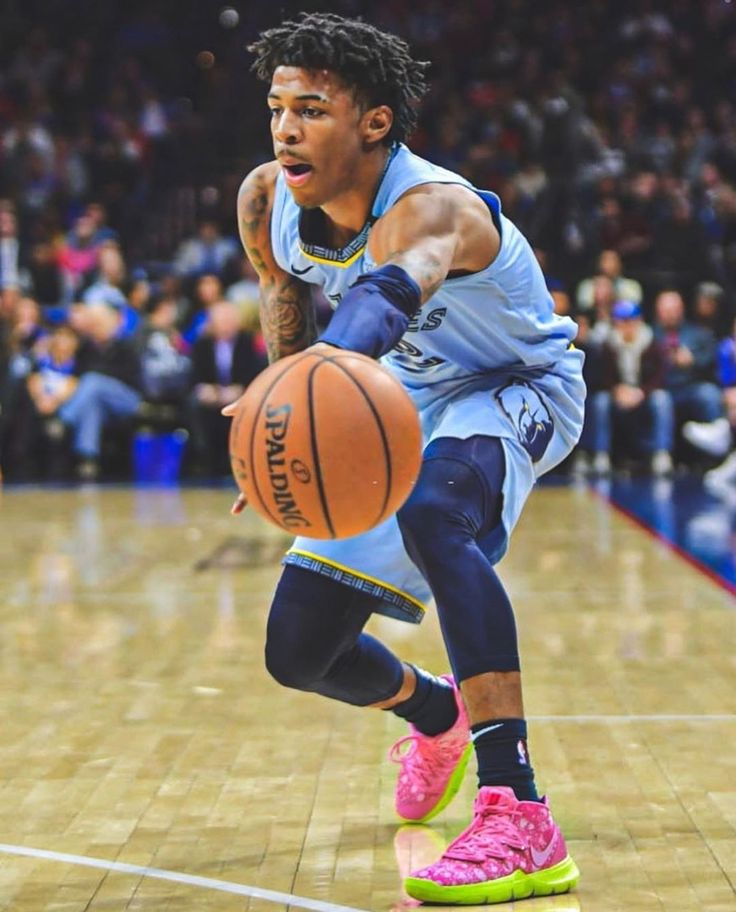 You are left with a dangerous, taller opponent, and your task is to prevent him from getting the ball or picking up the ball after the throw.
You are left with a dangerous, taller opponent, and your task is to prevent him from getting the ball or picking up the ball after the throw.
It is difficult to do without the help of partners in this situation. In general, I am a supporter of the smallest shift with screens, because. this reduces individual responsibility and gives the attacker a chance to beat the defender.
9. If your player, while in possession of the ball, seeks to pass to a teammate who is close to him, you must step back and allow your defensive partner to slip, and then take an active position towards your attacker.
10. The defensive player should always try to get the dribbler to the touchline, into the corner of the court, stop him and turn his back to the backboard.
The second defender, seeing this situation, attacks the opponent with the ball from the other side. Both of them with active hand movements interfere with making an aimed pass. It is important that the rest of the defense players are ready, focused on intercepting the ball.
11. The USSR national team used the defense against the first pass in a fast break more than once against opponents who counterattack through a fast dribbler, sending him the first pass after picking up the ball from the backboard. So we often defended against the Spanish national team, where the ?1 dribbler was Carbolan or Salosobal.
Our team's tall center, who plays close to the backboard, whether it's Tkachenko, Sabonis or Belostenny, prevents the dribbler from making an accurate first pass. At the same time, our fast defender, for example, Homichujus, presses ?1 opponent and does not allow him to receive the ball. The other three of our players were to immediately return to their zone.
So often the counterattack of the Spanish national team failed, in which the Spaniards were especially dangerous and productive.
I must say that there are some significant differences between the game of our and American defenders. According to my conclusions, they are:
1. Americans on the defensive are always offensive, they are not afraid of a contact attack on the attacker in possession of the ball.
Americans on the defensive are always offensive, they are not afraid of a contact attack on the attacker in possession of the ball.
In a low stance with arms raised, the US defender seeks to hit the ball, prevent a pass from being made, not to mention a shot. If the attacker lifts the ball up, the defender immediately reacts to this: his hand rises up and seeks to interfere with any actions of the attacker. The attacker put the ball down - the defender immediately takes two quick steps back, preparing to prevent the opponent's pass without losing his defensive stance.
2. When active, the American defender never allows the attacker to pass with the ball through the center, into the middle, but constantly pushes him to the sideline. When an attacker is missed on the front line, teammates immediately come to the aid of the defender. Our tactic is, on the contrary, to close the baseline, where, as we believe, it is more difficult to provide team assistance. I think it's best to find a compromise here: train the safety net both in the middle of the three-second zone and when passing on the front. And in games, take into account the characteristics of attackers under guard, do not let them go in their favorite directions (left hand, favorite throw point, feints, etc.).
And in games, take into account the characteristics of attackers under guard, do not let them go in their favorite directions (left hand, favorite throw point, feints, etc.).
3. When screening, the American defender's first impulse is to pass behind his player. With a quick movement of the foot close to the screener, he tries to get ahead of the screening and stay with his ward, and if this fails, a change of attacking players follows. This does not reduce activity.
9 Definitions Every Basketball Player Should Know
Learning to Speak the Same Language
Learning to Speak the Same Language
WE DECIDED TO HELP BEGINNERS LEARN THE BASKETBALL LANGUAGE, IN ORDER TO NOT BE LOST ON THE COURT AND THE BEST COURT.
!!! If you haven't seen the first article with 11 terms, read it first:
!!! If you haven't seen the first article with 11 terms, read it first:
Basketball terms everyone should know
This word in basketball has two meanings: sometimes they say this about the bench. "Sit on the bank." And sometimes they call it a block shot. We hope that you will distribute cans, and not sit on it.
"Sit on the bank." And sometimes they call it a block shot. We hope that you will distribute cans, and not sit on it.
Another definition for blockshot:
Pick and roll
One of the simple combinations in basketball, which is based on the interaction of two players. The first moves with the ball, the second puts a screen (peak) and after the screen he turns around (roll) and moves to the ring.
Pick-n-pop
This combination is a variation of the pick-and-roll, only in this version the player who puts the screen does not move towards the ring, but opens up to the throw.
The difference in playing the combination will be in reading the actions of the defense.
In the 1990s, Utah and their duo of Karl Malone (2 in all-time scoring) and John Stockton (1 in all-time assists) often played this combo.
Eurostep
One of the ways to complete the attack in the passage is when the first step is taken in one direction and the second in the other. This movement began to be popularized by Manu Ginobili, and now Giannis Antetokounmpo stands out with this technique from his size, sweeping steps and powerful dunks from not the most convenient positions.
This movement began to be popularized by Manu Ginobili, and now Giannis Antetokounmpo stands out with this technique from his size, sweeping steps and powerful dunks from not the most convenient positions.
See a short and simple analysis from the Greek:
Back door
A type of offensive interaction when a player without the ball runs behind his defender and receives a pass there. For a better understanding, watch the video:
Ankle breaker
A term that is often heard in relation to street basketball, although it is sometimes seen at the professional level. This phrase refers to a situation where the ball carrier makes some movement and the defender goes down. In some cases, the ankle is twisted along with this ...
Coast to coast
This is the name given to the passage of one player from his ring to someone else's in a fast break.
Double, triple (triple-double) and quadruple-double
All these terms refer to achievements in statistics per match.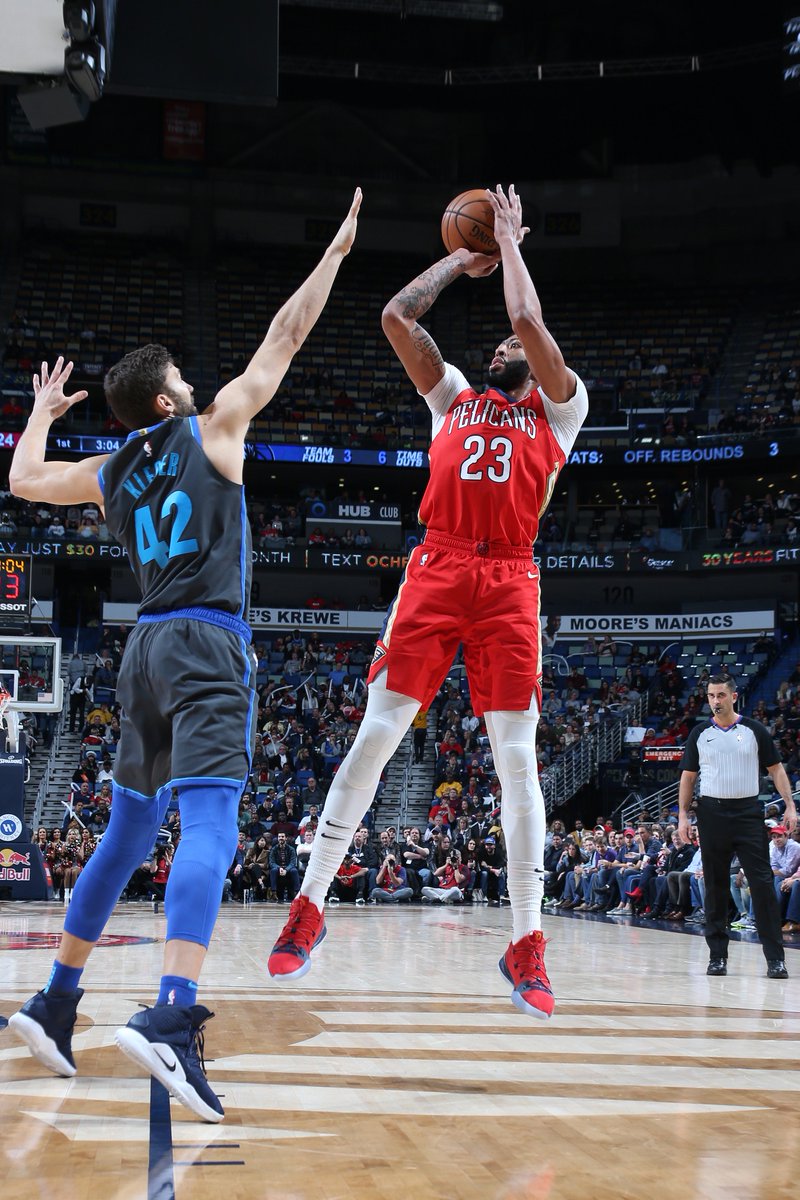 Each game is recorded: points, rebounds, assists, block shots and interceptions. When 10+ points are observed for 2 indicators of them, it will be a double. If according to 3 indicators - triple, if according to 4 - quadruple-double.
Each game is recorded: points, rebounds, assists, block shots and interceptions. When 10+ points are observed for 2 indicators of them, it will be a double. If according to 3 indicators - triple, if according to 4 - quadruple-double.
Interesting fact: Russell Westbrook is the second player in history to average a triple-double per game in 1 season. However, he is the only one who has done this more than once.
Interesting fact
Only 4 people in the history of the NBA collected a quadruple-double. The last one was recorded in 1994 by David Robinson.
Do you want to take your first steps in basketball or improve your basic skills? We have a Basic Basketball Skills workout for you. See the schedule and sign up:
SIGN UP
Coach: Yuriy Bespalov
- Professional player of the INANOMO 3x3 team;
- Champion of Russia 3x3 2019;
- Winner and medalist of the MOFB championship;
- MLBL Summer League MVP 2017;
- Multiple participant of the Moscow Open;
- Champion of Moscow 3x3 2017;
- MVP GrunisCup 2017.